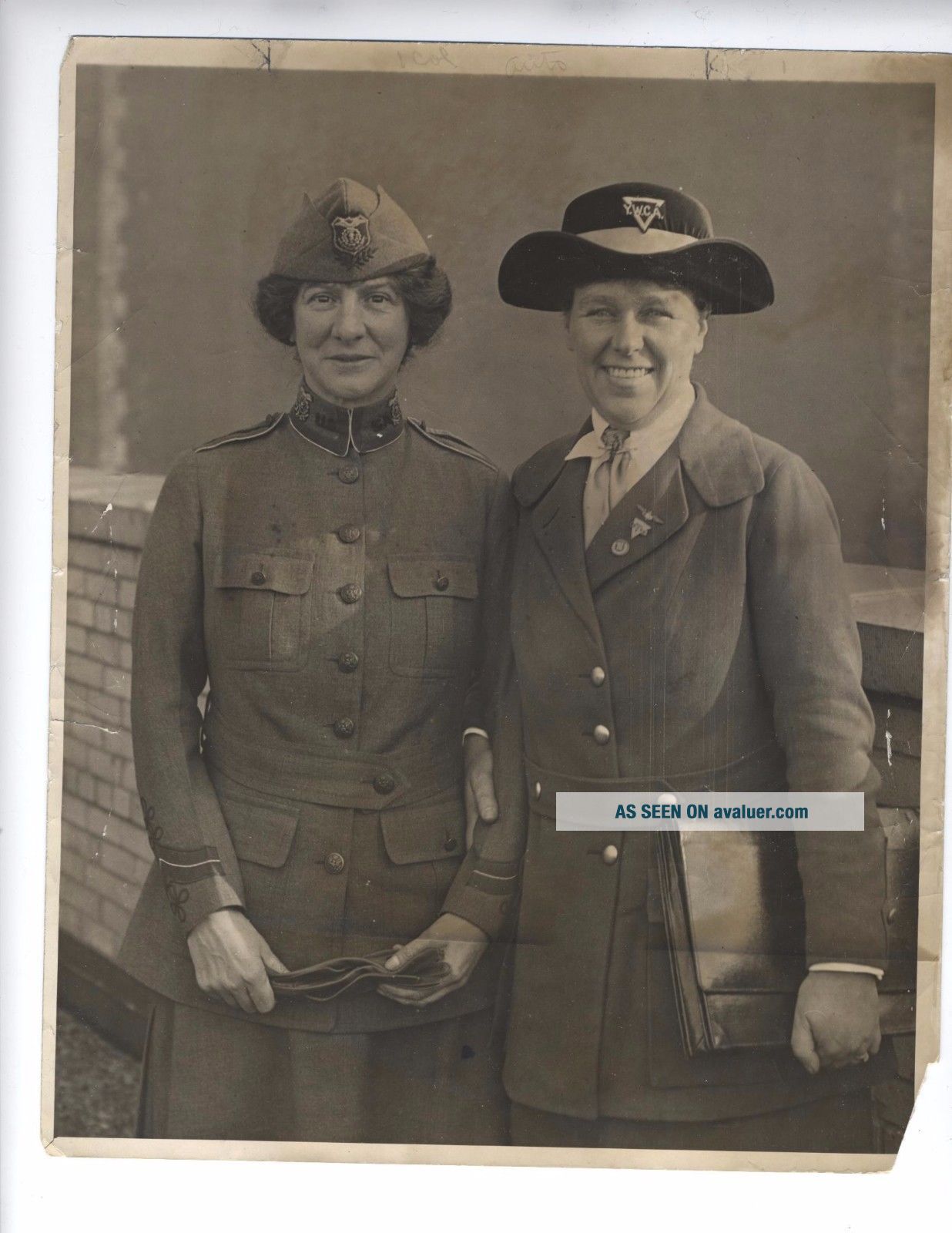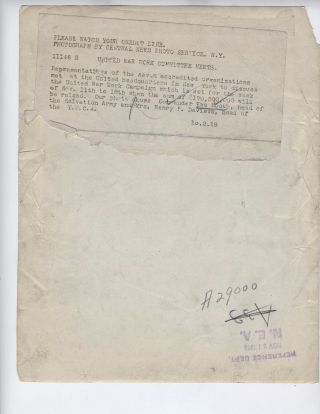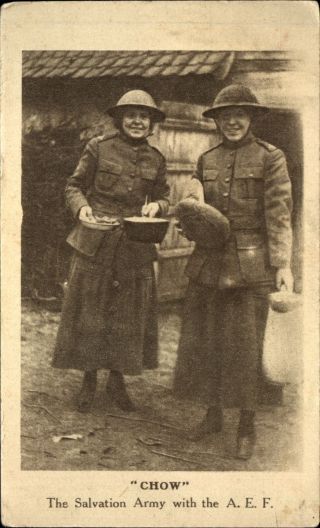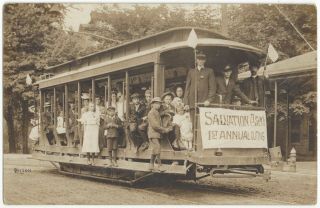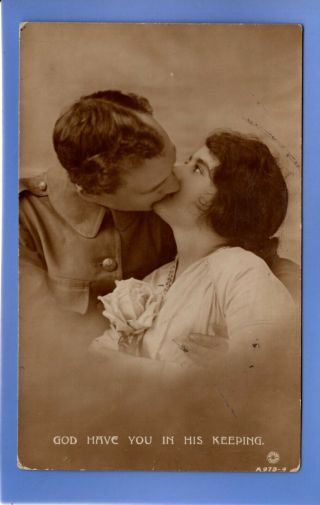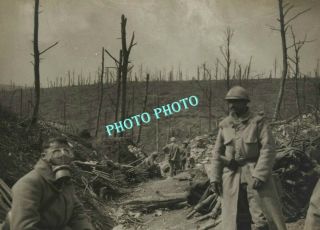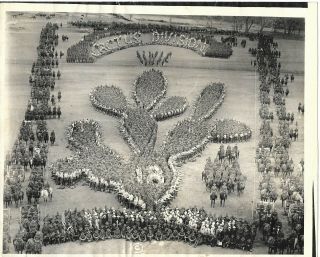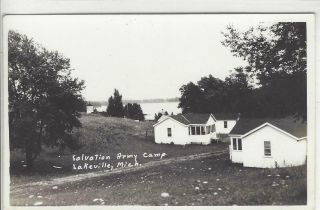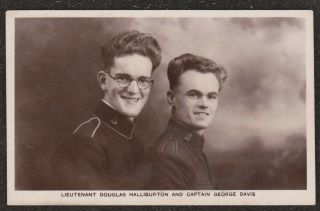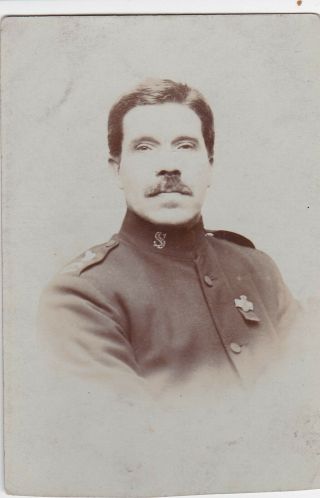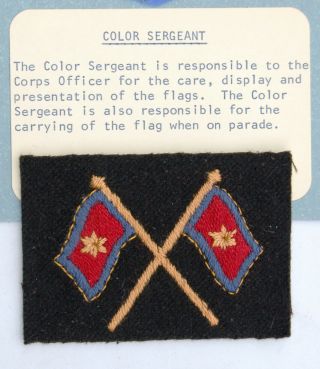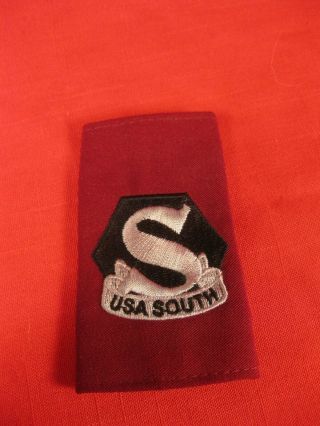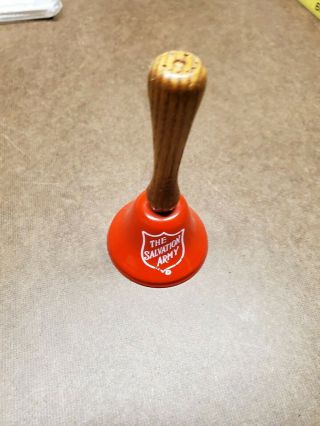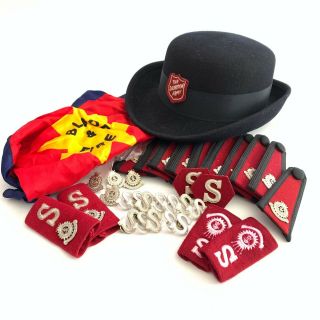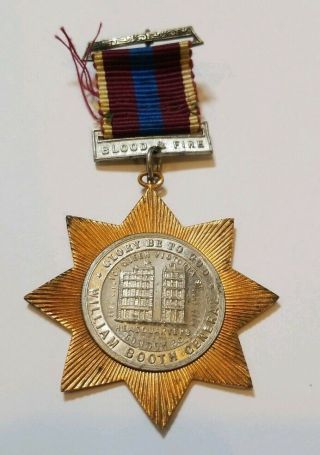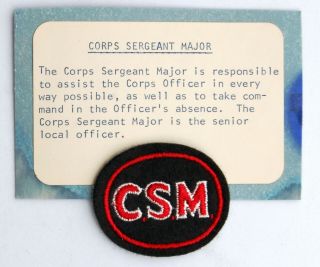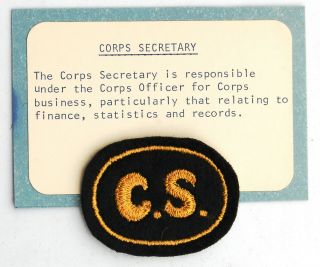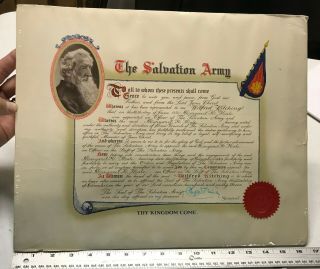Salvation Army WW1 WAR YMCA/YWCA 1918 Photo Vintage Booth Davidson
Item History & Price
| Reference Number: Avaluer:2802167 |
UNITED WAR WORK COMMITTEE MEETS
Representatives of the seven accredited organizations met at the United headquarters in New York to discuss the United War Work Campaign which is set for the week of Nov. 1tth to q18th when the sum of $170, 500, 000 will be raised. Our photo shows Commander Eva Booth, head of the Salvation Army and Mrs. Henry P. Davidson, head of the YWCA 10.2.18
As Field Commissioner, Eva traveled ...throughout Great Britain, courageously facing riotous crowds. Following a period in charge of Officer Training, she was appointed temporary Territorial Commander of the United States, then Territorial Commander of Canada. In 1904 she returned as Commander of the United States, and held this position until 1934.
In the aftermath of the San Francisco earthquake of 1906, she led a mass meeting in Union Square, New York, and raised over $12, 000 for S.A. relief work amongst the victims of the disaster.
In August 1917, despite differences between Commander Eva and U.S. General George Pershing, the first of 250 Salvationists left New York for the front line of the Great War in France. They soon won the confidence of the troops, with their cheerful brand of "seven-days-a-week" Christianity. As tributes poured in, Eva protested: "The Salvation Army has had no new success; we have only done an old thing in an old way." The American people disagreed, and subscribed an unprecedented $13 million to clear debts incurred by the Army, through its provision of canteens, hostels, rest rooms during the war, and afterwards on the provision of care and accommodation for the returning forces.
In 1927 Eva visited her brother, General Bramwell Booth, with a memorandum which sought to change the way in which the salvation Army appointed its General. Bramwell was not convinced; he was adamant that he would appoint its successor, as his father had done before him.
In January 1929 the first High Council decided otherwise, and since then the General has been elected by the High Council, in line with Eva's original proposal.
Evangeline Booth was elected General by the second High Council in 1934. She brought to the Generalship a wealth of experience in many areas of the Army's work, but never lost the zeal and enthusiasm of the early years. Dubbed "The Musician General' by Army papers of the time, she took a great interest in the soul-winning activities of the musical sections of the Salvation Army.
Like her father, the Founder, Eva extensively traveled the world. After her election as General she toured Great Britain, and in 1935 India, Ceylon, Australia, New Zealand, Hawaii and the United States; then, immediately upon her return, Norway and Sweden. By the end of 1935 she undertook a "motorcade" - the entire East Coast of England up to Darlington then several Western Counties and the Thames Valley. The following year, she went on another motorcade, from Land's End to John O'Groats, and visited Canada, United States and France, though by this time she was over seventy years old.
The Salvation Army's work greatly prospered during Evangeline Booth's leadership, with S.A. activities being commenced in Singapore, Egypt, French Equatorial Africa, the Philippines, Mexico, and Penang (Malaya).
Her term of office ended on October 31 1939, when commissioner George Lyndon Carpenter was elected as the Army's fifth General. Towards the end of November, Evangeline left Britain for New York, and spent the remaining years of her life in the land which she had served for so very many years. On July 17, 1950, she was Promoted to Glory at the age of 84.
EVANGELINE BOOTH (1865-1950)
Even in her 80s, Evangeline Booth still had the spunk and energy of the young English beauty who made her father's London-based Salvation Army an American institution.
Today the Army claims 27, 000 officers and cadets in 91 different countries. Its charitable works for the poor, the derelict, and the spiritually lost are world-famous. The Salvation Army is more than street-corner bands and Christmas bell ringers. It is a multimillion-dollar organization operating a far-flung network of hospitals, welfare missions, home for unwed mothers, employment agencies, and family-counseling clinics.
But on Christmas morning, 1865, it was no more than an idea forming in the mind of an unconventional Methodist minister named William Booth. That same morning his wife gave birth to the couple's 8th child, a girl.
Catherine Booth had just read Uncle Tom's Cabin and wanted to name her baby Little Eva. Booth demurred and wrote Evelyne on the birth certificate. Years later, in the U.S., Evelyne would be persuaded by Frances Willard, founder of the Woman's Christian Temperance Union, to adopt the name Evangeline as more dignified, befitting the commander of Salvationist forces in America.
Though all the Booth children accepted their father's vision of a paramilitary Christian movement, Evangeline threw herself into the cause at an early age with characteristic gusto. The Booths preferred street corners to indoor churches, and popular musical instruments like banjos, tambourines, and drums to organs, in their drive to reach the lower depths of London society.
The Salvation Army was a controversial late arrival in Victorian England. Violence and abuse dogged the steps of its "soldiers." Like her colleagues, Evangeline weathered harassment from street toughs, bullying saloonkeepers, and unsympathetic civil authorities.
At 15 she was a sergeant selling the Army paper War Cry in the slums of East London. In her early 20s she was a captain and a compelling skid-row evangelist. But she feared she was still not reaching deep enough into the city's underworld. So Evangeline Booth dressed in rags and became a flower girl on the steps in Piccadilly Circus, ministering incognito to alcoholics, beggars, and prostitutes.
She became commander of the London detachment and her father's favorite troubleshooter. Once a splinter group in the U.S., led by her brother Ballington Booth, sought to lure American Salvationists away from their London affiliate and into a rival group called Volunteers of America. When Evangeline arrived in New York, the doors to Army headquarters on 14th Street had been locked against her. Undaunted, she mounted the fire escape and climbed through a rear window. The dissidents hissed and booed until she literally wrapped herself in an available American flag and challenged: "His that, if you dare." In the stunned silence she played her concertina and sang "Over Jordan without Fearing." Ballington's rebellion was quelled.
General Evangeline Cory Booth, OF (December 25, 1865 – July 17, 1950) was a British theologist and the 4th General of The Salvation Army from 1934 to 1939. She was the first woman to hold the post of General.
Contents [hide] 1 Early life2 The Salvation Army3 Fourth General4 Later years5 References6 External linksEarly life[edit]She was born in South Hackney, London, England, the seventh of eight children born to William Booth and Catherine Mumford, who had earlier in the year founded The Christian Mission, which became the Salvation Army in 1878. Catherine Booth had recently read Uncle Tom's Cabin and wanted to name her baby 'Eva', but William Booth did not like the name and wrote 'Evelyne' on the birth certificate. Years later, while in the United States, Evelyne would be persuaded by Frances Willard, founder of the Woman's Christian Temperance Union, to adopt the name 'Evangeline' as being more dignified and more befitting the commander of The Salvation Army in America.[1]
At 15 she was a Sergeant selling the Army's paper The War Cry in the slums of east London.[1] In 1887, at 21 years of age, she became the officer of the corps in Marylebone, where there was very strong opposition to The Salvation Army. Wherever trouble threatened, General Booth’s solution was invariably the same, 'Send Eva!'.[2]
The Salvation Army[edit]She was appointed as Field Commissioner throughout Great Britain from 1888 to 1891, courageously facing riotous crowds. From 1891 until 1896 she was in charge of Officer Training. When in 1896 an American break-away group led by her brother Ballington Booth and his wife Maud Ballington Booth attempted to tempt American Salvationists away from The Salvation Army and into a rival group called Volunteers of America, General Booth sent Evangeline to New York. When she arrived the doors to Army headquarters on 14th Street had been locked against her. However, "she mounted the fire escape and climbed through a rear window. The dissidents hissed and booed until she literally wrapped herself in an available American flag and challenged: "Hiss that, if you dare." In the stunned silence she played her concertina and sang "Over Jordan without Fearing." Ballington's rebellion was quelled."[1][3]
She was appointed temporary Territorial Commander of the United States, then Territorial Commander of Canada. In 1904 she returned as Commander of the United States, and held this position until 1934. In the aftermath of the 1906 San Francisco earthquake, she led a mass meeting in Union Square, New York, and raised over $12, 000 for Salvation Army relief work amongst the victims of the disaster. During this period she became a US citizen.[2]
In August 1917, despite the differences between Commander Evangeline Booth and US General Pershing, commander of the American Expeditionary Force (AEF), the first of 250 Salvationists left New York for the front line of the Great War in France. They soon won the confidence of the troops with their cheerful brand of ‘seven-days-a-week’ Christianity. As tributes poured in, Evangeline protested: ‘The Salvation Army has had no new success; we have only done an old thing in an old way.’ The American people disagreed, and subscribed an unprecedented $13 million to clear debts incurred by The Army, through its provision of canteens, hostels, rest rooms during the war, and afterwards on the provision of care and accommodation for the returning forces. For her work in support of the AEF, Booth was awarded the Distinguished Service Medal by the U.S. Army. Booth was one of only a very few civilian women to be so honored for service during the First World War.
In 1927 Evangeline visited her brother, General Bramwell Booth, with a memorandum which set to change the way in which The Salvation Army appointed its General. Bramwell was not convinced; he was adamant that he would appoint his successor as his father had done before him.[2]
In January 1929 the first High Council of The Salvation Army decided otherwise, and since then the General has been elected by the High Council, in line with Evangeline Booth’s original proposal.
Fourth General[edit]Evangeline Booth was elected General by the second High Council in 1934. She brought to the Generalship a wealth of experience in many areas of The Army’s work but never lost the zeal and enthusiasm of the early years. Dubbed ‘The Musician General’ by Army papers of the time, she took great interest in the soul-winning activities of the musical sections of The Salvation Army.
Like her father, the Founder, Evangeline extensively travelled the world. After her election as General she toured Great Britain, and in 1935 India, Ceylon, Australia, New Zealand, Hawaii and the United States; then, immediately upon her return, Norway and Sweden. By the end of 1935 she undertook a ‘motorcade’ - the entire East Coast of England up to Darlington, then several Western Counties and the Thames Valley. The following year she went on another motorcade from Land's End to John O’Groats, and visited Canada, the United States and France, though by this time she was over seventy years old.[2]
The Salvation Army’s work greatly prospered during Evangeline Booth’s leadership, with Salvation Army activities being commenced in Singapore, Algeria, Egypt, French Equatorial Africa, the Philippines, Mexico, and Penang (Malaya).
Later years[edit]Her term of office ended on October 31, 1939 when Commissioner George Lyndon Carpenter was elected as the Army’s fifth General. Towards the end of November, Evangeline left Britain for her home in up-state New York, and spent the remaining years of her life in the land which she had served for so very many years.[2]
The monument of Evangeline C. BoothShe wrote several books, including Toward a Better World and Songs of the Evangel. The Salvation Army Evangeline Booth College in Atlanta, Georgia is named after her, as is 'The Evangeline Booth Lodge' in Chicago which is "a haven for families and individuals suddenly homeless because of eviction, disasters such as a fire or flood, loss of utilities, domestic violence, being stranded while traveling, or other crises."[4]
General Evangeline Booth lived in Hartsdale, New York, until her death at the age of 84 from arteriosclerosis. She is interred in Kensico Cemetery, near White Plains, New York. Her home, the Evangeline Booth House, now known as St. Andrew's Episcopal Church, was added to the National Register of Historic Places in 2011.[5]
The Salvation Army is a Protestant Christian church and international charitable organization structured in a quasi-military fashion. The organisation reports a worldwide membership of over 1.5 million, [2] consisting of soldiers, officers and adherents known as Salvationists. Its founders Catherine and William Booth sought to bring salvation to the poor, destitute and hungry by meeting both their "physical and spiritual needs". It is present in 127 countries, [3] running charity shops, operating shelters for the homeless and disaster relief and humanitarian aid to developing countries.
The theology of the Salvation Army is derived from that of Methodism although it is distinctive in institution and practice. The Army's doctrine is typical of evangelical Protestant denomination. The Army's purposes are "the advancement of the Christian religion ... of education, the relief of poverty, and other charitable objects beneficial to society or the community of mankind as a whole".[4]
The Army was founded in 1865 in London by one-time Methodist circuit-preacher William Booth and his wife Catherine as the East London Christian Mission. In 1878 Booth reorganised the mission, becoming its first General and introducing the military structure which has been retained to the present day.[5] The current world leader of The Salvation Army is General Brian Peddle, who was elected by the High Council of The Salvation Army on 3 August 2013.[citation needed]
Contents [hide] 1 History2 Structure, organisation and expenditures3 Beliefs4 Symbols4.1 Flag4.2 Crest4.3 Red Shield4.4 Uniform4.5 Tartan4.6 Salute5 Services5.1 Music playing5.2 Ensembles5.3 Disaster relief5.4 Thrift stores and charity shops5.5 Red kettles5.6 Red Shield Appeal5.7 Family Tracing Service5.8 Youth groups5.8.1 Alove UK6 Honours7 Publications8 Controversy8.1 Criticism by LGBT activists8.1.1 The Salvation Army's response8.2 Canadian charity work8.3 Proselytising during government-funded social service in New York8.4 Australian sex abuse cases8.5 Unpaid labour in the UK9 See also10 Notes and references11 Bibliography12 External linksHistory[edit]
The Salvation Army founders, Catherine and William Booth
Women's dormitories operated by The Salvation Army, Washington, D.C. c. 1920The Salvation Army was founded in London's East End in 1865 by one-time Methodist Reform Church minister William Booth and his wife Catherine as the East London Christian Mission. The name "The Salvation Army" developed from an incident on 19 and 20 May. William Booth was dictating a letter to his secretary George Scott Railton and said, "We are a volunteer army." Bramwell Booth heard his father and said, "Volunteer! I'm no volunteer, I'm a regular!" Railton was instructed to cross out the word "volunteer" and substitute the word "salvation".[6] The Salvation Army was modelled after the military, with its own flag (or colours) and its own hymns, often with words set to popular and folkloric tunes sung in the pubs. Booth and the other soldiers in "God's Army" would wear the Army's own uniform, for meetings and ministry work. He became the "General" and his other ministers were given appropriate ranks as "officers". Other members became "soldiers".[7]
When William Booth became known as the General, Catherine is known as the "Mother of The Salvation Army". William preached to the poor, and Catherine spoke to the wealthy, gaining financial support for their work. She also acted as a religious minister, which was unusual at the time; the Foundation Deed of the Christian Mission states that women had the same rights to preach as men. William Booth described the organisation's approach: "The three ‘S's’ best expressed the way in which the Army administered to the 'down and outs': first, soup; second, soap; and finally, salvation."[8]
In 1880, the Salvation Army started its work in three other countries: Australia, Ireland, and the United States. It was not always an Officer of The Salvation Army who started the Salvation Army in a new country; sometimes Salvationists emigrated to countries and started operating as "the Salvation Army" on their own authority. When the first official officers arrived in Australia and the United States, they found groups of Salvationists already waiting for them and started working with each other.
George Scott Railton – first Commissioner of the Salvation ArmyThe Salvation Army's main converts were at first alcoholics, morphine addicts, prostitutes and other "undesirables" unwelcome in polite Christian society, which helped prompt the Booths to start their own church.[9] The Booths did not include the use of sacraments (mainly baptism and Holy Communion) in the Army's form of worship, believing that many Christians had come to rely on the outward signs of spiritual grace rather than on grace itself.[10] Other beliefs are that its members should completely refrain from drinking alcohol (Holy Communion is not practiced), smoking, taking illegal drugs and gambling.[11] Its soldiers wear a uniform tailored to the country in which they work; the uniform can be white, grey, navy, fawn and are even styled like a sari in some areas. Any member of the public is welcome to attend their meetings. As the Salvation Army grew rapidly in the late 19th century, it generated opposition in England. Opponents, grouped under the name of the Skeleton Army, disrupted Salvation Army meetings and gatherings, with tactics such as throwing rocks, bones, rats, and tar as well as physical assaults on members of the Salvation Army. Much of this was led by pub owners who were losing business because of the Army's opposition to alcohol and targeting of the frequenters of saloons and public houses.[12]
The Salvation Army's reputation in the United States improved as a result of its disaster relief efforts following the Galveston Hurricane of 1900 and the 1906 San Francisco earthquake. The familiar use of bell ringers to solicit donations from passers-by "helps complete the American portrait of Christmas."[according to whom?] In the U.S. alone, over 25, 000 volunteers with red kettles are stationed near retail stores during the weeks preceding Christmas for fundraising.[9] The church remains a highly visible and sometimes controversial presence in many parts of the world.
In 1994, the Chronicle of Philanthropy, an industry publication, released the results of the largest study of charitable and non-profit organisation popularity and credibility. The study showed that The Salvation Army was ranked as the 4th "most popular charity/non-profit in America" of over 100 charities researched, with 47% of Americans over the age of 12 choosing 'Love' and 'Like A Lot' for The Salvation Army.[13]
Charity Watch rates the Salvation Army an "A-" to an "A", [14] indicating a high level of financial efficiency and organisational transparency.
Structure, organisation and expenditures[edit]
The Salvation Army International Headquarters in LondonAs of 1 September 2015 the Salvation Army operates in 127 countries and provides services in 175 different languages.[3] For administrative purposes, the Salvation Army divides itself geographically into territories, which are then sub-divided into divisions. In larger areas, regional and area commands are also introduced as sub-divisions of divisions. Each territory has an administrative hub known as territorial headquarters (THQ). Likewise, each division has a divisional headquarters (DHQ). Each of these territories is led by a territorial commander who receives orders from the Salvation Army's International Headquarters in London. A territory is normally led by an officer holding the rank of colonel (for small territories) or commissioner for larger territories. In some countries, the work of The Salvation Army may be called a command, led by a command commander. A larger command is typically led by an officer holding the rank of colonel.
The worldwide expansion of Salvation armyIts stated membership (as quoted from 2010 Year Book) includes 16, 938 active and 9, 190 retired officers, 1, 122, 326 soldiers, 189, 176 Adherents, 39, 071 Corps Cadets, 378, 009 Junior Soldiers, around 104, 977 other employees and more than 4.5 million volunteers. Members of the Salvation Army also include "adherents"; these are people who do not make the commitment to be a soldier but who recognise the Salvation Army as their church. (According to the 2006 Salvation Army Year Book, in the United States there are 85, 148 Senior Soldiers and 28, 377 Junior Soldiers, 17, 396 Adherents and around 60, 000 employees.)
The current world leader of the Salvation Army is General André Cox.
The monument to the Salvation Army in Kensico CemeteryThe Salvation Army is one of the world's largest providers of social aid, [citation needed] with expenditures including operating costs of $2.6 billion in 2004, helping more than 32 million people in the U.S. alone. In addition to community centres and disaster relief, the organisation does work in refugee camps, especially among displaced people in Africa. The Salvation Army has received an A− rating from the American Institute of Philanthropy. In the United Kingdom, the Salvation Army is no longer the largest non-governmental provider of social services; however, it still provides a significant service to people in need. The Salvation Army is the second largest charity in the United States, with private donations of almost $2 billion for the fiscal year ending 30 September 2007.[15]
In 2004, the Army in the United States received a $1.6 billion donation in the will of Joan B. Kroc, third wife of former McDonald's CEO Ray Kroc. This donation was among the larger individual philanthropic gifts ever given to a single organisation. The donation came with certain restrictions that caused some controversy.[16]
The International Congress of the Salvation Army is normally held every 10 years[17] as a conference for all Salvationists from around the world to meet. The first such conference took place in London, UK, from 28 May to 4 June 1886, and subsequent Congressional meetings were held sporadically until 1904 and then 1990.[18] The seventh International Congress in Atlanta, Georgia, United States, from 28 June to 2 July 2000, was the first held outside of the UK.[19] The latest International Congress was held in London on 1–5 July 2015, in commemoration of the 150th Anniveresary of the Salvation Army's founding.
Officers are given Marching Orders to change ministries within the Salvation Army. Usually, officers are given new Marching Orders every two to five years and reassigned to different posts, sometimes moving great distances.
A Moscow court ruled that the Salvation Army was a paramilitary organisation subject to expulsion. In October 2006, the European Court of Human Rights ruled the decision illegal.[20]
Beliefs[edit]
A Salvation Army citadel (Corps) with a charity shop attached, in Worthing, West Sussex.The beliefs of the Salvation Army rest upon these eleven doctrines:[21]
We believe that the Scriptures of the Old and New Testaments were given by inspiration of God; and that they only constitute the Divine rule of Christian faith and practice.We believe that there is only one God, who is infinitely perfect, the Creator, Preserver, and Governor of all things, and who is the only proper object of religious worship.We believe that there are three persons in the Godhead - the Father, the Son and the Holy Ghost - undivided in essence and co-equal in power and glory.We believe that in the person of Jesus Christ the Divine and human natures are united, so that He is truly and properly God and truly and properly man.We believe that our first parents were created in a state of innocency, but by their disobedience they lost their purity and happiness; and that in consequence of their fall all men have become sinners, totally depraved, and as such are justly exposed to the wrath of God.We believe that the Lord Jesus Christ has, by His suffering and death, made an atonement for the whole world so that whosoever believes in him will not perish but have eternal life.We believe that repentance towards God, faith in our Lord Jesus Christ and regeneration by the Holy Spirit are necessary to salvation.We believe that we are justified by grace, through faith in our Lord Jesus Christ; and that he that believeth hath the witness in himself.We believe that continuance in a state of salvation depends upon continued obedient faith in Christ.We believe that it is the privilege of all believers to be wholly sanctified, and that their whole spirit and soul and body may be preserved blameless unto the coming of our Lord Jesus Christ.We believe in the immortality of the soul; in the resurrection of the body; in the general judgment at the end of the world; in the eternal happiness of the righteous; and in the endless punishment of the wicked.The denomination does not celebrate the Christian sacraments of Baptism and Holy Communion; although its officers conduct marriages, it holds a traditional Protestant belief that marriage was not instituted by Christ and therefore is not a sacrament.
The Salvation Army opposes euthanasia and assisted suicide. Its official stance on abortion is that "The Salvation Army believes in the sanctity of all human life and considers each person to be of infinite value and each life a gift from God to be cherished, nurtured and redeemed. Human life is sacred because it is made in the image of God and has an eternal destiny. (Genesis 1:27) Sacredness is not conferred, nor can it be taken away by human agreement." The Salvation Army official stance admitted in 2010 exceptions in cases such as rape and incest: "In addition, rape and incest are brutal acts of dominance violating women physically and emotionally. This situation represents a special case for the consideration of termination as the violation may be compounded by the continuation of the pregnancy."[22] It is also against the death penalty: "The Salvation Army recognises that the opinions of Salvationists are divided on the moral acceptability of capital punishment and its effectiveness as a deterrent. However, to advocate in any way the continuance or restoration of capital punishment in any part of the world would be inconsistent with the Army's purposes and contrary to the Army's belief that all human life is sacred and that each human being, however wretched, can become a new person in Christ."
In 2012, the Salvation Army published a "Positional Statement on Homosexuality" after receiving adverse publicity about their position on homosexuality.[23]
The Bible teaches that God’s intention for humankind is that society should be ordered on the basis of lifelong, legally sanctioned heterosexual unions. ... A disposition towards homosexuality is not in itself blameworthy nor is the disposition seen as rectifiable at will. ... Homosexual practice however, is, in the light of Scripture, clearly unacceptable. Such activity is chosen behaviour and is thus a matter of the will. It is therefore able to be directed or restrained in the same way heterosexual urges are controlled. Homosexual practice would render any person ineligible for full membership (soldiership) in the Army.[24]
As of 2016 the organisation will not appoint homosexual people to posts as ministers, preferring individuals "whose values are consistent with the church's philosophy".[25] (See also § Criticism by LGBT activists section.)
The ordination of women is permitted in the Salvation Army. Salvation Army officers were previously allowed to marry only other officers (this rule varies in different countries); but this rule has been relaxed in recent years. Husbands and wives usually share the same rank and have the same or similar assignments; the major exception to this is the General's spouse, who holds the rank of commissioner.
Symbols[edit]Flag[edit]
Standard of The Salvation Army (Anglophone Version)The Salvation Army flag is a symbol of the Army's war against sin and social evils. The red on the flag symbolises the blood shed by Jesus Christ, the yellow for the fire of the Holy Spirit and the blue for the purity of God the Father.
Crest of The Salvation Army (Anglophone version)Crest[edit]The oldest official emblem of The Salvation Army is the crest.
In 1878 Captain W.H. Ebdon suggested a logo, and in 1879 it was to be found on the letterhead of the Salvation Army Headquarters. The captain's suggested design was changed only slightly and a crown was added.
The Army's crest proclaims Biblical truth though it’s symbolism:
The sun with its rays represents the light and fire of the Holy Spirit. (Matthew 3:11)The cross represents the cross of Jesus on which He died as a sacrifice for our sins. (Romans 3:25)The letter "S" represents the salvation which is available to all people through Jesus Christ. (John 3:16-17)The crossed swords represent God’s Word (Hebrews 4:12). God's Word is the Christian’s weapon in the salvation war (the war against Satan and evil).The Gospel shots (Psalm 119:160) represent the basic truths of the Gospel; there are 7 in all.1 – The existence of a Holy God; 2 – The evil of sin are against God and man; 3 – There will be punishment for sin that is fair and everlasting; 4 – Jesus died on the cross for the human race; 5 – Salvation is for all mankind and is free to all who accept Jesus Christ; 6 – It is the responsibility of every Christian to do whatever they can do to spread the Gospel; 7 – God rewards those who are faithful with eternal life in Heaven with Him.
The words "Blood and Fire" as the "war cry" of the Salvation Army. It is Jesus' blood that washes us clean from sin and it is the fire of the Holy Spirit that makes us pure and helps us live lives that are pleasing to God.The crown represents the "Crown of Life and Glory" which God will give to all those who have been faithful to Him (James 1:12).Red Shield[edit]The Red Shield has its origins in Salvation Army work during wartime. At the end of the 19th century, Staff-Captain Mary Murray was sent by William Booth to support British troops serving in the Boer War in South Africa. Then, in 1901, this same officer was given the task of establishing the Naval and Military League, the forerunner of the Red Shield Services.
The Salvation Army red shield logo, displayed on the side of a night shelter in Geneva, Switzerland.Salvation Army officers serving in the Red Shield Services in wartime performed many functions. The Doughnut Girls of World War I are an early example, serving refreshments to troops in the trenches. They also provided first aid stations, ambulances, chaplaincy, social clubs, Christian worship and other front-line services.[26]
This symbol is still used in Blue Shield Services that serve the British Armed Forces but it is widely used as a simple, more readily identifiable symbol in many Salvation Army settings. It is common to see the Red Shield used on casual Salvation Army uniform. It is now official Salvation Army policy in the UK that the red shield should be used as the external symbol of the Salvation Army, with the Crest only being used internally. Therefore, any new Salvation Army building will now have the red shield on the outside rather than the crest which certainly would have been used on its Corps (church) buildings.[27]
In Australia, the Red Shield has become one of the country's most identified and trusted symbols, leading the Australian Salvation Army to prefer to use this symbol over the logo on its uniform, corps buildings and advertising materials. In the 5th volume of Australian Superbrands it was recorded that "Research reveals that the popular Salvation Army slogan 'Thank God for the Salvos' has almost total recognition amongst the Australian public, achieving 93 per cent aided awareness".[28]
Uniform[edit]Salvation Army officers and soldiers often wear uniforms. The idea that they should do so originated with Elijah Cadman who, at the Salvation Army's 'War Congress' in August 1878 said "I would like to wear a suit of clothes that would let everyone know I meant war to the teeth and salvation for the world". The uniform identifies the wearer as a Salvationist and a Christian. It also symbolises availability to those in need. The uniform takes many forms internationally but is characterised by the 'S' insignia for 'Salvation' and carries the meaning 'Saved to Serve', or 'Saved to Save'.[citation needed] Other letters are substituted to conform with local language.
Tartan[edit]
The Salvation Army Dress TartanSince 1983 there has been an official Salvation Army tartan. It was designed by Captain Harry Cooper, for the Perth Citadel Corps centenary commemoration in Scotland. It is based upon the colours of the Salvation Army flag, with which it shares the same symbolism. However, it is rarely seen outside Scotland.[29]
Salute[edit]The Salvation Army has a unique form of salute which involves raising the right hand above shoulder-height with the index finger pointing upwards. It signifies recognition of a fellow citizen of heaven, and a pledge to do everything possible to get others to heaven also.[30] In the case of saluting in response to applause, in circumstances such as a musical festival or being applauded for a speech, it also signifies that the Salvationist wishes to give Glory to God and not themselves.
In some instances, the salute is accompanied with a shout of 'hallelujah!'
Services[edit]Music playing[edit]
A Salvation Army band parade in Oxford, United KingdomAs the popularity of the organisation grew and Salvationists worked their way through the streets of London attempting to convert individuals, they were sometimes confronted with unruly crowds. A family of musicians (the Frys, from Alderbury, Wiltshire) began working with the Army as their "bodyguards" and played music to distract the crowds.[31]
The tradition of having musicians available continued and eventually grew into standard brass bands. These are still seen in public at Army campaigns, as well as at other festivals, parades and at Christmas. Across the world the brass band has been an integral part of the Army’s ministry and an immediately recognisable symbol to Salvationists and non-Salvationists alike. The Salvation Army also has choirs; these are known as Songster Brigades, normally comprising the traditional soprano, alto, tenor and bass singers. The premier Songster Brigade in the Salvation Army is the International Staff Songsters (ISS).
The standard of playing is high and the Army operates bands at the international level, such as the International Staff Band (a brass band) which is the equal of professional ensembles although it does not participate in the brass band contest scene, and territorial levels such as the New York Staff Band. Some professional brass players and contesting brass band personnel have Salvation Army backgrounds. Many Salvation Army corps have brass bands that play at Salvation Army meetings, although not all.
The Salvation Army also fielded large concertina bands. From the turn of the (20th) century to the Second World War between a third and a half of all SA officers in Britain played concertina. For an evangelist the concertina's portability, its ability to play both melody and chords, and most especially the fact that the player can sing or speak while playing, were all distinct advantages over brass instruments.[32][33][34]
The Army tradition in music is to use the popular idiom of the day to reach people for Jesus. The Army's Joy Strings were a hit pop group in the 1960s and early 1970s in the UK and beyond, reaching the charts and being featured on national television. Another popular band is The Insyderz, an American ska-core group popular in the 1990s and early 2000s. Hundreds of bands carry on this Salvation Army tradition, such as New Zealand's Moped, Chamberlain, Vatic, Agent C, and The Lads; England's Electralyte; Australia's Soteria Music Ministries, Summer Carnival Band, Crown of Thorns and Escape; and America's transMission, The Singing Company, HAB, BurN, and CJD – Cookies, Juice, & Donuts. Saytunes is a website designed to encourage and promote these contemporary Salvation Army bands and artists.
Another significant musical feature of the Salvation Army is its use of tambourines. With coloured ribbons representing the colours of the Salvation Army flag, timbrels play an integral facet of music in the Salvation army. They are mainly played by women.
Local corps usually sing contemporary worship music songs in Sunday worship services, as well as traditional hymns and music accompanied by the brass band.
Ensembles[edit]Today it is becoming common in Salvation Army corps not to have a full brass band. This is reflective for many social and cultural reasons.[citation needed] Some Salvation Army corps make use of smaller ensembles of musicians. Often this ensemble consists simply of a guitar, piano or a keyboard, drums and sometimes a bass guitar and other instruments, especially during "Youth Fellowships".[citation needed]
The music played does tend to also take on a more contemporary style as is reflected in modern music today. The early Salvation Army bands were known for their excitement and public appeal, and the modern ensemble keeps to this ideology. Traditional hymns are still used in worship services and these are blended with other musical pieces from Christian Music Publishers such as Vineyard Music, Hillsong, and Planet Shakers to name but a few.
Disaster relief[edit]In the USA the Salvation Army's first major forays into disaster relief resulted from the tragedies of the Galveston Hurricane of 1900 and the 1906 San Francisco earthquake. The Salvationists' nationwide appeals for financial and material donations yielded tremendous support, enabling the Army to provide assistance to thousands. General Evangeline Booth, when she offered the services of Salvationists to President Woodrow Wilson during the First World War, thrust Salvation Army social and relief work to newer heights. Today the Salvation Army is best known for its charitable efforts.
The Salvation Army is a non-governmental relief agency and is usually among the first to arrive with help after natural or man-made disasters. They have worked to alleviate suffering and help people rebuild their lives. After the Indian Ocean tsunami in 2004, they arrived immediately at some of the worst disaster sites to help retrieve and bury the dead. Since then they have helped rebuild homes and construct new boats for people to recover their livelihood. Members were prominent among relief organisations after Hurricane Hugo and Hurricane Andrew and other such natural disasters in the United States. In August 2005, they supplied drinking water to poor people affected by the heat wave in the United States. Later in 2005 they responded to hurricanes Katrina and Rita. They have helped the victims of an earthquake in Indonesia in May 2006.
The William Booth Memorial Training College, Denmark Hill, London: The College for Officer Training of the Salvation Army in the UKSince Hurricane Katrina struck the Gulf Coast, the Salvation Army has allocated donations of more than $365 million to serve more than 1.7 million people in nearly every state. The Army’s immediate response to Hurricane Katrina included the mobilisation of more than 178 canteen feeding units and 11 field kitchens which together have served more than 5.7 million hot meals, 8.3 million sandwiches, snacks and drinks. Its SATERN (Salvation Army Team Emergency Radio Network)[35] network of amateur ham-radio operators picked up where modern communications left off to help locate more than 25, 000 survivors. Salvation Army pastoral care counsellors were on hand to comfort the emotional and spiritual needs of 277, 000 individuals. As part of the overall effort, Salvation Army officers, employees and volunteers have contributed more than 900, 000 hours of service.
The Salvation Army was one of the first relief agencies on the scene of the September 11 attacks in New York City in 2001. They also provided prayer support for families of missing people.
The Salvation Army, along with the American National Red Cross, Southern Baptist Convention, and other disaster relief organisations, are national members of the National Voluntary Organizations Active in Disaster (NVOAD).[36]
Also among the disaster relief capabilities is the Red Shield Defence Services, often called the SallyMan for short. The effort that they put in is similar to that of a chaplain, and reaches many more, offering cold drinks, hot drinks, and some biscuits for the soldiers of the military to have, though, if a SallyMan is on deployment, the locals are offered a share in the produce.
In Australia the Salvation Army have Emergency Services Support Units throughout the country, providing food and other welfare to members of the Emergency Services such as bushfires, floods, land search, and other both large- and small-scale emergency operations undertaken by Police, Fire, Ambulance and State Emergency Service members, and the general public affected by these events.
Thrift stores and charity shops[edit]
Salvation Army Thrift Store, Santa Monica, CAThe Salvation Army is well known for its network of thrift stores or charity shops, colloquially referred to as "the Sally Ann" in Canada and "Salvos Stores" in Australia, which raise money for its rehabilitation programs by selling donated used items such as clothing, housewares and toys. Clothing collected by Salvation Army stores that are not sold on location are often sold wholesale on the global second hand clothing market.
The Salvation Army's fundraising shops in the United Kingdom participate in the UK government's Work Programme, a workfare programme where benefit claimants must work for no compensation for 20 to 40 hours per week over periods that can be as long as 6 months.[37][38][39][40]
Red kettles[edit]
Red kettle at supermarket entrance, Ypsilanti, MichiganIn many countries, the Salvation Army is most recognised during the Christmas season with its volunteers and employees who stand outside of businesses and play/sing Christmas carols, or ring bells to inspire passers-by to place donations of cash and cheques inside red kettles. A tradition has developed in the United States in which, in some places, gold coins or rings or bundles of large bills are anonymously inserted into the kettles. This was first recorded in 1982, in Crystal Lake, Illinois, a suburb of Chicago.[41][42] The red kettles are not only used during the Christmas season though. They are used throughout the year at other fundraising events, such as on National Doughnut Day in the U.S. On this day, some donut shops that teamed up with the Salvation Army have a red kettle set up for donations.[43]
Red Shield Appeal[edit]The Red Shield Appeal is an annual fundraising campaign in some territories, such as the UK and Australia. Each year, officers, soldiers, employees and volunteers take to the streets worldwide to participate in door-to-door or street collections. The money raised is specifically channelled towards The Salvation Army's social work in each respective territory. Within the territory defined by the United Kingdom and Ireland (UKIT) this collection is known as the Annual Appeal, and it often carries another name that the generally public would more readily know – in 2012 becoming The Big Collection.
Family Tracing Service[edit]The Family Tracing Service (sometimes known as the Missing Persons Service) was established in 1885, and the service is now available in most of the countries where The Salvation Army operates. The Tracing Service's objective is to restore (or to sustain) family relationships where contact has been lost, whether recently or in the distant past. Thousands of people are traced every year on behalf of their relatives.
Youth groups[edit]
Salvation Army in LausanneThe Salvation Army includes many youth groups, which primarily consist of its Sunday schools and the Scout and Guide packs that are sometimes set up. The Scout and Guide packs are affiliated and sponsored by the Salvation Army but are open units allowing anyone to join, these units/pack observe Christian standards and encourage the young people to investigate and develop in their Christian faith. Some territories have Salvation Army Guards and Legions Association (SAGALA). In the United States these internal youth groups that are specifically for females are known as Girl Guards (older females) and Sunbeams (younger females). Adventure Corps serves boys who are enrolled in school for first through eighth grade, and is sometimes separated into Rangers (older males) and Explorers (younger males).
Alove UK[edit]In the 21st century, the Salvation Army in the United Kingdom created a branch for the youth, called Alove, the Salvation Army for a new generation. Its purpose is to free the youth of the church and their communities to express themselves and their faith in their own ways. Its mission statement is "Calling a generation to dynamic faith, radical lifestyle, adventurous mission and a fight for justice", and it emphasises worship, discipleship, missions, and social action. Alove is a member of the National Council for Voluntary Youth Services (NCVYS).[44]
Honours[edit]General George Carpenter founded the Cross of the Order Of Distinguished Auxiliary Service in 1941 to express the Salvation Army's gratitude for service given to the organisation by non-Salvationists. The Cross has been awarded to parliamentarians, lawyers, doctors, financiers and members of the nobility.[45]
Publications[edit]New Frontier Chronicle – news and networking for the Salvation Army.[46]Caring Magazine – curating conversation around issues of social concern.[47]
Edition of The War Cry, 6 August 1887The War Cry newspaper, first published in 1879 in the United Kingdom.[48]Faith and Friends magazine[49]Salvationist magazine[50]Word and Deed journal[51]KidZone magazine[52]Priority magazine[53]Pipeline, The Salvation Army's news, features and opinion magazine[54]Red magazine, aimed at youth and Corps Cadets in Aus South (Discontinued)[citation needed]Controversy[edit]Criticism by LGBT activists[edit]Some in the United States have alleged that the Salvation Army discriminates against lesbian, gay, bisexual, and transgender (LGBT) individuals in its hiring practices.[55][56] The Salvation Army states that it does not "discriminate against hiring gays and lesbians for the majority of its roughly 55, 000 jobs".[57] Because the Salvation Army is a church, Title VII of the U.S. Civil Rights Act of 1964 allows it to inquire into people's religious beliefs in its hiring practices. In 2001, the Salvation Army pressed the Bush Administration to exempt it and other religious groups from anti-discrimination legislation which it felt infringed on the organisation's religious freedoms. This request was denied, and was sharply rebuked by David Smith, then-spokesperson for the Human Rights Campaign. "Gays and lesbians are taxpayers, too, " said Smith. "Their money should not be used by religious groups to fund discriminatory practices against them."[57]
The Salvation Army Western Territory approved a plan in October 2001 to start offering domestic partnership benefits to gay employees.[citation needed] Members of various evangelical Christian interest groups protested the decision. Focus on the Family founder James Dobson excoriated the Salvation Army for abandoning its "moral integrity" and urged his radio listeners to bombard the organisation's offices with phone calls and letters. The American Family Association also accused the Salvation Army of a "monstrous ... appeasement of sin" that resulted in a "betrayal of the church". In November 2001 the Salvation Army nationwide rescinded the Western Territory's decision with an announcement that it would only provide benefits coverage for different-sex spouses and dependent children of its employees.
In Australia there has ben a dramatic shift from the International Salvation Army teachings; a small number of Australian Officers have identified themselves as being proudly and openly homosexual.[citation needed] These gay and lesbian officers have been a vocal part of seeking reform of their movement from within and a change to the inyernal rigid structures. The Salvation Army in Australia now seeks to be inclusive and accepting of all the LGBTIQ community. The Salvation Army is being regularly presented with forums and discourses from within their own parishoners and ministers about the valid acceptance of same sex couples and the possible future marriages of same sex partners. The drastic decline in The Salvation Army and their members in the last decade has cause them to re-examine their methodology, theology and relevance in a modern day society.
In 2004, the Salvation Army said that it would close operations in New York City unless it was exempted from a municipal ordinance requiring them to offer benefits to gay employees' partners. The City Council refused to make the exemption. Mayor Michael R. Bloomberg's administration chose not to enforce the ordinance. The administration's right to decline to enforce the ordinance was upheld by the New York State Court of Appeals in 2006.[58]
On 15 December 2012, in Canada, Andrea Le Good noticed a Salvation Army bell-ringer carrying a sign reading "if you support gay rights: please do not donate". While the bell-ringer claimed he had permission from the charity to wear the sign, Salvation Army spokeswoman Kyla Ferns said that it had no part in the sign, and that the bell-ringer was pulled away immediately when the charity learned about it.[59] The charity's website describes marriage as heterosexual by definition, and a published document called on homosexuals to embrace celibacy as a way of life. The same document also states that there is no scriptural support for the mistreatment of homosexuals.[59]
In February 2000, the Salvation Army in the United Kingdom publicly opposed (in their publication The War Cry and in a letter to a Scottish Parliament committee) the repeal of Section 28 of the Local Government Act 1988, which prevented local authorities from "intentionally promot[ing] homosexuality".[60] However, the organisation's UK website states that it offers "unconditional assistance and support regardless of race, religion, gender or sexual orientation, respecting the identity and choices of all those referred to them. ... As well as having a right to be dealt with professionally, people can expect from us encouragement and a respect for their individual beliefs, ambitions and preferences".[61]
Before the passing of the Homosexual Law Reform Act 1986 by the New Zealand Parliament, the Salvation Army was active throughout New Zealand gathering signatures for a petition seeking to prevent the bill's passing. In 2006, the Army released a statement regretting the ill feelings that persisted following this activity. It stated in part "We do understand though that The Salvation Army's official opposition to the Reform Bill was deeply hurtful to many, and are distressed that ill-feeling still troubles our relationship with segments of the gay community. We regret any hurt that may remain from that turbulent time and our present hope is to rebuild bridges of understanding and dialogue between our movement and the gay community."[62]
Despite documented events of Salvation Army's volunteers and their views, the organisation has issued an LGBT Statement as a response. The statement does not address any documented news events of discrimination and claims to debunk these events as urban myth.[63]
In November 2013 it was made known that the Salvation Army was referring LGBT individuals to one of several conversion therapy groups.[63] As a response the Salvation Army removed such referrals from their website.[64]
The Salvation Army's response[edit]A positional statement on the Salvation Army UK and Ireland site states:
The Salvation Army teaches that sexual acts should take place only in a monogamous heterosexual marriage, believing that this reflects God's intentions for sexual behaviour and provides the best environment for raising children.[65]
The positional statement is, however, intended explicitly for members of the Salvation Army[66] and the Salvation Army mission statement as of 2013 states:
The Salvation Army stands against homophobia, which victimises people and can reinforce feelings of alienation, loneliness and despair. We want to be an inclusive church community where members of the LGBT community find welcome and the encouragement to develop their relationship with God ... Our international mission statement is very clear on this point when it says we will "meet human needs in [Jesus'] name without discrimination". Anyone who comes through our doors will be welcomed with love and service, based on their need and our capacity to provide.[67]
As of late 2013, activists were still calling on the Salvation Army to change its stance on LGBT issues, citing ongoing discrimination.[68][69]
Canadian charity work[edit]During the 2010 Christmas season, the Salvation Army in Calgary, Alberta, refused to accept toys based on the Harry Potter and Twilight franchises because of a perceived conflict with the organisation's religious principles. One volunteer claimed that the toys were destroyed instead of being given to other agencies. The volunteer also criticised the Salvation Army for accepting violence-themed toys such as plastic rifles while not accepting Harry Potter or Twilight toys. A Salvation Army captain said that the toys were given to other organisations, not disposed of.[70] This policy is however, not universal, as the Wetaskiwin chapter of the Salvation Army has accepted Harry Potter toys. One captain called the series "a classic story of good winning over evil".[71]
Also during the 2010 Christmas season, the Salvation Army in Vancouver, BC, came under fire for a program that provided goodie bags to federal inmates for Christmas by playing Santa to incarcerated criminals.[72] This was however simply an extended outreach as part of the Salvation Army's prisoner visitation program established over a century ago.
Proselytising during government-funded social service in New York[edit]In 2004, the Salvation Army's New York division was named in a lawsuit filed by 18 current and former employees of its social service arm, claiming that the organisation asked about the religious and sexual habits of employees in programs funded by local and state government. One member claimed the organisation forced them to agree "to preach the Gospel of Jesus Christ".[73] Proselytising or otherwise pursuing religious motives in a government-funded program is generally considered a violation of the Establishment Clause of the US Constitution. While the employment-discrimination portion of the lawsuit was dismissed in 2005, government agencies agreed in a 2010 settlement to set up monitoring systems to ensure that the Army did not violate church-state separation in its publicly funded projects. The organisation did not dispute allegations that nine-year-olds in a city-funded foster care program were put through a "confirmation-like" ceremony, where they were given Bibles and prayed over.[74]
Australian sex abuse cases[edit]From the 1940s to the 1980s the Salvation Army in Australia sheltered approximately 30, 000 children. In 2006 the Australian division of the Salvation Army acknowledged that sexual abuse may have occurred during this time and issued an apology. In it, the Army explicitly rejected a claim, made by a party unnamed in the apology, that there were as many as 500 potential claimants.[75]
In 2013 it was reported that private settlements totalling A$15.5 million had been made in Victoria relating to 474 abuse cases; a Salvation Army spokesman said that "This should not have happened and this was a breach of the trust placed in us" and that they were "deeply sorry" whilst claiming that the abuse was "the result of individuals and not a culture within the organization".[76][77][78]
On 28 January 2014, the Royal Commission into Institutional Responses to Child Sexual Abuse, a royal commission of inquiry initiated in 2013 by the Australian Government and supported by all of its state governments, [79] began an investigation into abuse cases at the Alkira Salvation Army Home for Boys at Indooroopilly; the Riverview Training Farm (also known as Endeavour Training Farm) at Riverview – both in Queensland; the Bexley Boys’ Home at Bexley; and the Gill Memorial Home at Goulburn – both in New South Wales. The investigation also examined the Salvation Army's processes in investigating, disciplining, removing and/or transferring anyone accused of, or found to have engaged in, child sexual abuse in these homes.[80][81][82][83] On 27 March 2014, the Royal Commission began an investigation into the handling by the Salvation Army (Eastern Territory) of claims of child sexual abuse between 1993 and 2014.[84][85][86]
The Royal Commission published a case study report on the findings and recommendations for one of the above-mentioned case studies.[87]
Unpaid labour in the UK[edit]The Salvation Army has been criticized for making use of the UK Government's workfare schemes across Britain.[88] The UK campaign group Boycott Workfare lists them as a participant in Workfare [89]
Henry Pomeroy Davison, Sr. (June 12, 1867 – May 6, 1922) was an American banker and philanthropist.[1]
Contents [hide] 1 Biography2 Career2.1 Involvement with the Red Cross2.2 Published works3 Personal life3.1 Legacy4 References5 Further reading6 External linksBiography[edit]Henry Pomeroy Davison was born on June 12, 1867 in Troy, Pennsylvania, the oldest of the four children of Henrietta and George B. Davison. Henry's mother died when he was nine years old in 1877.[2]
Career[edit]After completing his education he became a bookkeeper in a bank managed by one of his relatives, and at age 21 he gained employment at a bank in Bridgeport, Connecticut, the hometown of his wife. Three years later he moved to New York City where he was employed by the Astor Place Bank, and sometime later became president of the Liberty National Bank. Several years later he was involved in the founding and formation of the Bankers Trust Company. In 1909 he became a senior partner at JP Morgan & Company, and in 1910 he was a participant in the secretive meeting on Jekyll Island, Georgia that may have led to the creation of the Federal Reserve and has generated much speculation over the years.
Involvement with the Red Cross[edit]With the entry of the United States in World War I in 1917, Davison was named Chairman of the War Council of the American Red Cross. In this capacity, he led a campaign to win financial support for the Red Cross, quickly earning four million dollars used to fund Red Cross ambulances. In recognition of his service he was awarded the Distinguished Service Medal and was one of the few civilians so honored.
After the end of the war, he pressed for the creation of an international organization to coordinate the work of the different national Red Cross societies. Based on his recommendations, the League of Red Cross Societies was founded on May 15, 1919 by the societies of Great Britain, France, Japan, Italy, and the United States. Davison, wanted the League of Red Cross Societies to supersede the ICRC in controlling the Red Cross action in international affairs . He argued that:
“It should be in reality, and not merely in name an International Committee, a Committee on which there will be representatives from all countries, instead of, as at present, a committee consisting of amiable but somewhat ineffective Geneva gentlemen. That which calls itself ‘international’ has grown rather provincial… New blood, new methods, a new and more comprehensive outlook, these things are necessary.”[3]
The League was established in 1919 with Davison as its chairman. However, “Swiss aloofness or unilateralism was hard to overcome”, [4] with the result that the relationship between the ICRC and the League became, and was to remain, a problem for years to come.
Published works[edit]In 1919, he also published a book, The American Red Cross in the Great War, describing the wartime activities of the Red Cross. Davison was chairman of the league until his death in 1922.
This site is dedicated to examining the United War Work Campaign of November 11-18, 1918, an effort to raise $170, 000, 000 to provide entertainment for American troops abroad in World War I. Seven non-governmental organizations participated in this campaign: The American Library Association, Jewish Welfare Board, Knights of Columbus, the Salvation Army, War Camp Community Service, Young Men’s Christian Association and Young Women’s Christian Association. The campaign began November 11, 1918, on the day the war ended. However, fundraising continued, as troops would remain in France until well into 1919.
The “Seven Sisters” did not always get along well behind the scenes of the United War Work Campaign, but each had a personal stake in its success. Because of this, they were able to present a strong appeal to the people of the United States to donate to a cooperative coalition that wanted the best for all American servicemen.
U.S. Entry into World War IOn June 28, 1914, Archduke Franz Ferdinand of Austria was assassinated in Sarajevo by a member of a Serbian nationalist group known as the Black Hand.[1] This event ignited a series of military maneuvers throughout Europe that brought almost every nation on the continent into a state of war. On May 7, 1915, the British passenger vessel Lusitania was torpedoed and sunk by a German U-boat, dealing a final blow to American neutrality when 128 Americans died as a result of the attack.[2]
American soldiers going to the front in France.Figure 2. American soldiers going to the front in France.As American casualties continued to grow, Wilson became convinced that “failure to act… would forfeit American influence” as the possibility of a negotiated peace settlement faded.[3] The continuation of unrestricted submarine warfare led President Wilson to ask for, and receive, a declaration of war by the Congress of the United States in April of that year.[4]
Americans Social Groups in Support of the WarAn ad in the War Cry, the Salvation Army's periodical. Courtesy of the Library of Congress.Figure 3. An ad in the War Cry, the Salvation Army’s periodical. Courtesy of the Library of Congress.Once the United States entered the First World War, many social and ethnic groups endorsed the involvement of their country. One group not so willing to do so was the millions of African Americans living in the United States. Usually not possessing the right to vote, many in this demographic did not see the merit in defending a country that did not value them. Others, such as W. E. B. Du Bois, argued that the black community should support the war effort, “shoulder to shoulder with our white fellow citizens, ” without demanding compensation.[5] In addition to African Americans, religious groups found themselves pressured into declaring support for the war. Those participating in the United War Work Campaign, however, seized the opportunity to find a greater audience with the American public. As each of these groups pushed to prove that it was 100 percent American, the federal government viewed the campaign as an example of a united America in support of the war.
The United War Work CampaignIn the weeks and months before the United War Work Campaign took place in November of 1918, the seven sister groups came into conflict on a variety of issues. Ranging from the division of funds to the decision to have a single united funding drive, there was little common ground for the participants to stand on. By the conclusion of the campaign, however, these varied groups were able to raise more than enough money, despite their differences, to support American soldiers. No matter their creed, all of these American groups rallied to support “the boys over there.”
Use the following buttons or the tabs at the top of the page to explore this site on the United War Work Campaign.



